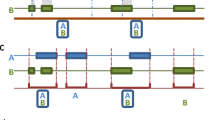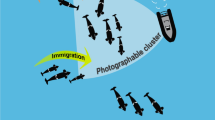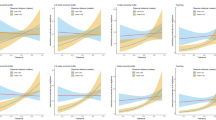Abstract
Social Network Analysis has become an important methodological tool for advancing our understanding of human and animal group behaviour. However, researchers tend to rely on arbitrary distance and time measures when defining ‘contacts’ or ‘associations’ between individuals based on preliminary observation. Otherwise, criteria are chosen on the basis of the communication range of sensor devices (e.g. bluetooth communication ranges) or the sampling frequencies of collection devices (e.g. Global Positioning System devices). Thus, researchers lack an established protocol for determining both relevant association distances and minimum sampling rates required to accurately represent the network structure under investigation. In this paper, we demonstrate how researchers can use experimental and statistical methods to establish spatial and temporal association patterns and thus correctly characterise social networks in both time and space. To do this, we first perform a mixing experiment with Merino sheep (Ovis aries) and use a community detection algorithm that allows us to identify the spatial and temporal distance at which we can best identify clusters of previously familiar sheep. This turns out to be within 2–3 m of each other for at least 3 min. We then calculate the network graph entropy rate—a measure of ease of spreading of information (e.g. a disease) in a network—to determine the minimum sampling rate required to capture the variability observed in our sheep networks during distinct activity phases. Our results indicate the need for sampling intervals of less than a minute apart. The tools that we employ are versatile and could be applied to a wide range of species and social network datasets, thus allowing an increase in both the accuracy and efficiency of data collection when exploring spatial association patterns in gregarious species.






Similar content being viewed by others
References
Altmann J (1974) Observational study of behavior—sampling methods. Behaviour 49(3–4):227–267
Aureli F, Schaffner CM, Boesch C, Bearder SK, Call J, Chapman CA, Connor R, Di Fiore A, Dunbar RIM, Henzi SP, Holekamp K, Korstjens AH, Layton R, Lee P, Lehmann J, Manson JH, Ramos-Fernandez G, Strier KB, Van Schaik CP (2008) Fission-fusion dynamics new research frameworks. Curr Anthropol 49(4):627–654. doi:10.1086/586708
Buijs S, Keeling LJ, Vangestel C, Baert J, Vangeyte J, Tuyttens FAM (2010) Resting or hiding? Why broiler chickens stay near walls and how density affects this. Appl Anim Behav Sci 124(3–4):97–103. doi:10.1016/j.applanim.2010.02.007
Burrus C (2010) Fast fourier transforms. Connexions. http://cnx.org/content/col10550/1.21/
Croft DP, Arrowsmith BJ, Bielby J, Skinner K, White E, Couzin ID, Magurran AE, Ramnarine I, Krause J (2003) Mechanisms underlying shoal composition in the Trinidadian guppy, Poecilia reticulata. Oikos 100(3):429–438
Croft DP, Krause J, James R (2004) Social networks in the guppy (Poecilia reticulata). Proc Biol Sci 271:S516–S519
Delcourt J, Becco C, Vandewalle N, Poncin P (2009) A video multitracking system for quantification of individual behavior in a large fish shoal: advantages and limits. Behav Res Meth 41(1):228–235. doi:10.3758/brm.41.1.228
Drewe JA (2010) Who infects whom? Social networks and tuberculosis transmission in wild meerkats. Proc Biol Sci 277(1681):633–642. doi:10.1098/rspb.2009.1775
Faust K, Skvoretz J (2002) Comparing networks across space and time, size and species. Sociol Methodol 32:267–299
Febrer K, Jones TA, Donnelly CA, Dawkins MS (2006) Forced to crowd or choosing to cluster? Spatial distribution indicates social attraction in broiler chickens. Anim Behav 72:1291–1300. doi:10.1016/j.anbehav.2006.03.019
Franks DW, Ruxton GD, James R (2010) Sampling animal association networks with the gambit of the group. Behav Ecol Sociobiol 64(3):493–503. doi:10.1007/s00265-009-0865-8
Franz M, Nunn CL (2009) Network-based diffusion analysis: a new method for detecting social learning. Proc Biol Sci 276(1663):1829–1836. doi:10.1098/rspb.2008.1824
Girvan M, Newman MEJ (2002) Community structure in social and biological networks. Proc Natl Acad Sci USA 99(12):7821–7826. doi:10.1073/pnas.122653799
Gomez-Gardenes J, Latora V (2008) Entropy rate of diffusion processes on complex networks. Phys Rev E 78(6):065102
Hui P, Chaintreau A, Scott J, Gass R, Crowcroft J, Diot C (2005) Pocket switched networks and the consequences of human mobility in conference environments. In: SIGCOMM 2005, Philadelphia, PA
James R, Croft DP, Krause J (2009) Potential banana skins in animal social network analysis. Behav Ecol Sociobiol 63(7):989–997. doi:10.1007/s00265-009-0742-5
Kaplan E, Hegarty C (2008) Understanding GPS principles and applications. Artech House, Norwood
Kasper C, Voelkl B (2009) A social network analysis of primate groups. Primates 50(4):343–356. doi:10.1007/s10329-009-0153-2
Kendrick KM, Atkins K, Hinton MR, Heavens P, Keverne B (1996) Are faces special for sheep? Evidence from facial and object discrimination learning tests showing effects of inversion and social familiarity. Behav Process 38(1):19–35
Kendrick KM, da Costa AP, Leigh AE, Hinton MR, Peirce JW (2001) Sheep don't forget a face. Nature 414(6860):165–166
Kerth G, Konig B (1999) Fission, fusion and nonrandom associations in female Bechstein's bats (Myotis bechsteinii). Behaviour 136:1187–1202
Krause J, Lusseau D, James R (2009) Animal social networks: an introduction. Behav Ecol Sociobiol 63(7):967–973. doi:10.1007/s00265-009-0747-0
Krause J, James R, Croft DP (2010) Personality in the context of social networks. Phil Trans Biol Sci 365:4099–4106. doi:10.1098/rstb.2010.0216
Krause J, Wilson A, Croft DP (2011) New technology facilitates study of social networks. Trends Ecol Evol 26:5–6
Leone EH, Estevez I (2008) Use of space in the domestic fowl: separating the effects of enclosure size, group size and density. Anim Behav 76:1673–1682. doi:10.1016/j.anbehav.2008.08.004
Ligout S, Porter RH (2004) The role of visual cues in lambs discrimination between individual agemates. Behaviour 141:617–632
Lynch JJ, Hinch GN (1992) The behaviour of sheep. CAB International
Miller NY, Gerlai R (2008) Oscillations in shoal cohesion in zebrafish (Danio rerio). Behav Brain Res 193(1):148–151. doi:10.1016/j.bbr.2008.05.004
Nagy M, Akos Z, Biro D, Vicsek T (2010) Hierarchical group dynamics in pigeon flocks. Nature 464(7290):U890–U899. doi:10.1038/nature08891
Naug D (2008) Structure of the social network and its influence on transmission dynamics in a honeybee colony. Behav Ecol Sociobiol 62(11):1719–1725. doi:10.1007/s00265-008-0600-x
Newman MEJ (2002) Assortative mixing in networks. Phys Rev Lett 89(20):208701. doi:10.1103/PhysRevLett.89.208701
Pásztor B, Mottola L, Mascolo C, Picco GP, Ellwood S, Macdonald DW (2010) Selective reprogramming of mobile sensor networks through social community detection. Paper presented at the 7th European Conference on Wireless Sensor Networks (EWSN2010). Coimbra, Portugal
Perreault C (2010) A note on reconstructing animal social networks from independent small-group observations. Anim Behav 80(3):551–562. doi:10.1016/j.anbehav.2010.06.020
Riding TAC, Dennis TE, Stewart CL, Walker MM, Montgomery JC (2009) Tracking fish using ‘buoy-based’ GPS telemetry. Mar Ecol Prog Ser 377:255–262. doi:10.3354/meps07809
Rose LM (2000) Behavioral sampling in the field: continuous focal versus focal interval sampling. Behaviour 137:153–180
Star KDC (1999) The role of infectious aerosols in disease transmission in pigs. Vet J 158(3):164–181
Sueur C, Jacobs A, Amblard F, Petit O, King AJ (2011) How can social network analysis improve the study of primate behavior? doi:10.1002/ajp.20915
Tan HL, Wilson AM, Lowe J (2008) Measurement of stride parameters using a wearable GPS and inertial measurement unit. J Biomech 41(7):1398–1406. doi:10.1016/j.jbiomech.2008.02.021
Taubert J (2010) Evidence of human-like, holistic face processing in spider monkeys (Ateles geoffroyi). J Comp Psychol 124(1):57–65. doi:10.1037/a0017704
Thom MD, Hurst JL (2004) Individual recognition by scent. Ann Zool Fenn 41(6):765–787
Tyler S (1979) Time-sampling—matter of convention. Anim Behav 27:801–810
Vital C, Martins EP (2009) UCINET for windows: software for social network analysis. Ethology 115(4):347–355. doi:10.1111/j.1439-0310.2009.01613.x
Voelkl B, Noe R (2010) Simulation of information propagation in real-life primate networks: longevity, fecundity, fidelity. Behav Ecol Sociobiol 64(9):1449–1459. doi:10.1007/s00265-010-0960-x
Wey T, Blumstein DT, Shen W, Jordan F (2008) Social network analysis of animal behaviour: a promising tool for the study of sociality. Anim Behav 75:333–344. doi:10.1016/j.anbehav.2007.06.020
Whitehead H (2009) SOCPROG programs: analysing animal social structures. Behav Ecol Sociobiol 63(5):765–778. doi:10.1007/s00265-008-0697-y
Wilkinson A, Specht HL, Huber L (2010) Pigeons can discriminate group mates from strangers using the concept of familiarity. Anim Behav 80(1):109–115. doi:10.1016/j.anbehav.2010.04.006
Willis CKR, Brigham RM (2004) Roost switching, roost sharing and social cohesion: forest-dwelling big brown bats, Eptesicus fuscus, conform to the fission-fusion model. Anim Behav 68:495–505
Yasuda T, Arai N (2005) Fine-scale tracking of marine turtles using GPS-argos PTTs. Zool Sci 22(5):547–553
Acknowledgements
Thanks to the Structure and Motion Laboratory at the Royal Veterinary College, Kyle Roskilly for help with the GPS measurement equipment and post-processing tools and Skye Rudiger and all of the staff at South Australian Research Development Institute (SARDI) for the support of our fieldwork. Thanks also to Declan McKeever for the discussions on transmission distances of infectious diseases and to Julian Drewe and two anonymous reviewers for their constructive feedback on an earlier version of this manuscript. This work was funded by CHDI Inc.
Author information
Authors and Affiliations
Corresponding author
Additional information
Communicated by J. Krause
Rights and permissions
About this article
Cite this article
Haddadi, H., King, A.J., Wills, A.P. et al. Determining association networks in social animals: choosing spatial–temporal criteria and sampling rates. Behav Ecol Sociobiol 65, 1659–1668 (2011). https://doi.org/10.1007/s00265-011-1193-3
Received:
Revised:
Accepted:
Published:
Issue Date:
DOI: https://doi.org/10.1007/s00265-011-1193-3




